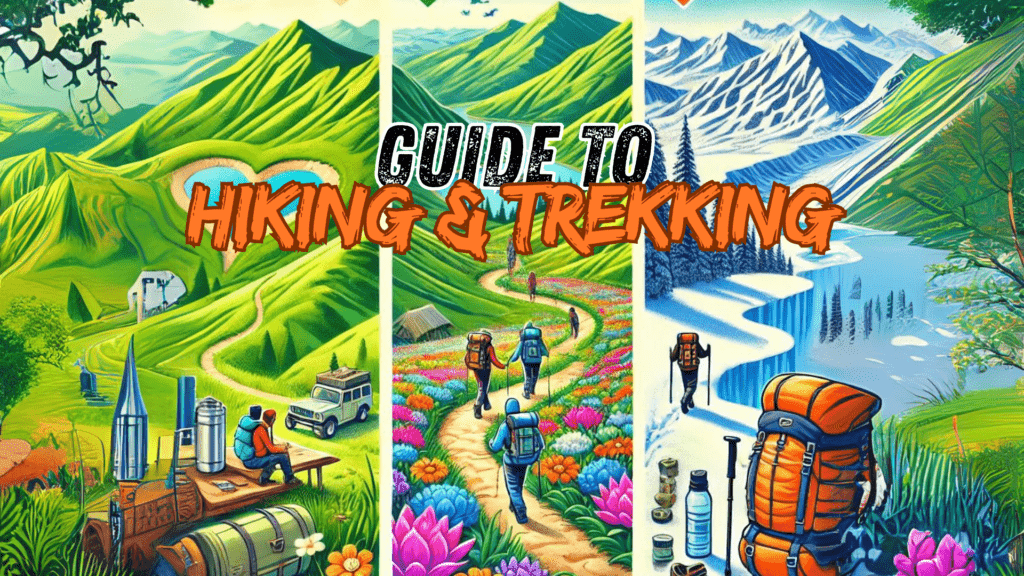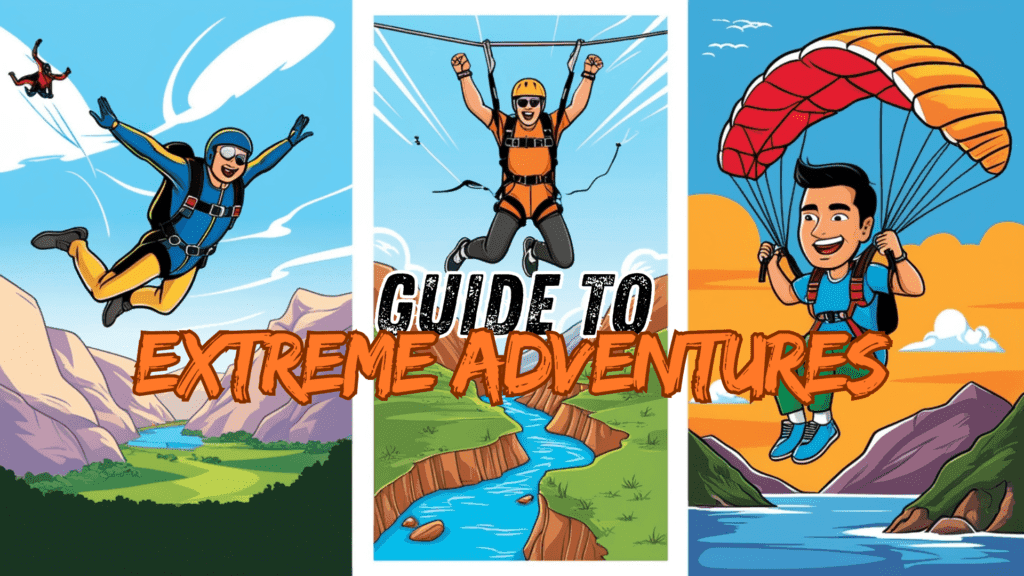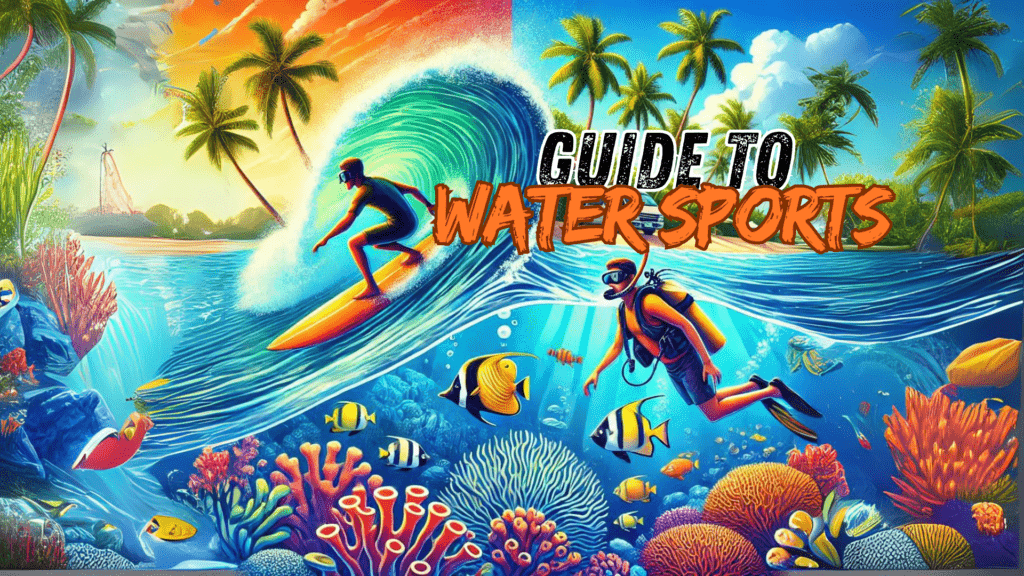Introduction:
So, you’ve decided to embrace your inner mountain goat and hit the trails? Whether you’re trekking through the lush valleys of Himachal or hiking the rugged Western Ghats, the idea of conquering nature’s heights is thrilling—until you realize you’ve forgotten your water bottle, your legs are on fire, and the only “view” is your hiking buddy’s backside.
But hey, that’s the beauty of hiking and trekking! The sweat, the struggle, and the sore feet are all part of the fun. At Travelertree.in, we believe that every hike—whether it’s a casual walk or a lung-busting climb—deserves a well-planned approach, a lot of humor, and the right gear. So here’s your go-to guide to popular trails, difficulty levels, and the equipment you need to survive (and maybe even enjoy) the adventure.
Popular Hiking and Trekking Trails in India (From Mild to Wild)
India is blessed with diverse landscapes, from snow-covered peaks to rolling green hills. Whether you’re a beginner or a seasoned trekker, there’s a trail for everyone. But before you start imagining yourself at the summit, let’s dive into the trails worth exploring.
1. Easy Trails: For the ‘I-Just-Want-a-Nature-Walk’ Crowd
If your idea of hiking is more “casual stroll” than “climbing Mount Everest,” these easy trails are perfect for beginners. You’ll break a light sweat, but you’ll still have enough energy to take a selfie at the end.
- Triund Trek, Himachal Pradesh: This trail is like the gateway drug for trekking in India. At just 9 km, it’s a perfect introduction for beginners. The views of the Dhauladhar range will make you feel like you’ve accomplished something major, even though you could probably still fit in a coffee break afterward.
- Nandi Hills, Karnataka: Located just outside Bangalore, this is a 4.5 km trek that gives you sweeping views without the sweeping exhaustion. Bonus: You can reward yourself with some fresh coconut water when you reach the top. It’s the healthy version of a victory beer!
2. Moderate Trails: For the ‘I-Can-Handle-a-Little-Pain’ Enthusiasts
These treks will challenge you a bit more, but they’re still manageable with a moderate level of fitness. Think of them as the middle ground between “nature walk” and “are-my-legs-still-attached?”
- Valley of Flowers, Uttarakhand: Not only will you feel like you’re hiking through a Bollywood set, but you’ll also get a moderate workout over the course of 17 km. Just be prepared for some sore muscles, especially if you’re not used to walking uphill for hours.
- Chembra Peak, Kerala: This trek in Wayanad takes you through tea plantations and up to a heart-shaped lake—yes, it’s as romantic as it sounds. The 9 km trek is challenging but totally worth it for the views. Just don’t blame us if you get lost daydreaming in the tea gardens.
3. Difficult Trails: For the ‘I-Came-to-Suffer’ Warriors
These treks are not for the faint-hearted. They require serious stamina, preparation, and the ability to laugh through the pain.
- Chadar Trek, Ladakh: This is more like an Arctic expedition than a trek. Imagine walking on a frozen river for days, with temperatures dropping to -30°C if that sounds like fun, welcome to Chadar! It’s one of India’s most iconic treks but be prepared for some serious cold and mental toughness.
- Roopkund Trek, Uttarakhand: Known for its “Skeleton Lake” at the summit, this trek is not only physically demanding (about 53 km) but also eerie. Legend has it, that ancient skeletons surround the lake—because apparently hiking to a haunted lake wasn’t challenging enough.
Difficulty Levels (Or How Much Should You Sweat?)
It’s important to know what you’re getting into before hitting the trails, so let’s break down the difficulty levels. If you find yourself gasping for breath on a trail meant for beginners, you might have bitten off more than you can chew.
1. Easy:
- What It Feels Like: You’re walking, you’re chatting, you’re barely sweating. These hikes are a piece of cake—like a pleasant stroll through the park, but with better views.
- Who It’s For: Total beginners, families, and people who prefer to think of hiking as “outdoor exercise lite.”
2. Moderate:
- What It Feels Like: You’ll sweat, you’ll curse a little, but you’ll still be smiling by the time you reach the top. Expect some uphill walking, but nothing that feels impossible.
- Who It’s For: People who’ve hiked before or are decently fit. If you can climb a few flights of stairs without needing a nap, you’re good to go.
3. Difficult:
- What It Feels Like: Why did I sign up for this? Am I dying? These trails involve serious elevation gains, long distances, and lots of physical endurance. But the views? Totally worth the agony.
- Who It’s For: Seasoned hikers, fitness freaks, and those who enjoy suffering for a good view. Definitely not for beginners.
Equipment You’ll Need (No, That Fancy Jacket Won’t Save You)
No trek is complete without the right gear. While you don’t need to look like a walking Patagonia ad, having the right equipment can make all the difference between a fun hike and a miserable one.
1. Shoes: The Key to Not Hating Life
- Pro Tip: Invest in a good pair of hiking shoes. Waterproof, sturdy, and comfortable—your feet will thank you. Brands like Quechua and Salomon offer great options without costing an arm and a leg.
- Fun Tip: Don’t break in your shoes on the day of the trek. Trust us, nothing says “bad idea” like blisters on a 10 km uphill trail.
2. Backpack: The Portable Lifesaver
- What You Need: A sturdy, comfortable backpack with enough room for essentials like water, snacks, a first-aid kit, and extra layers. You’re not moving house, so don’t overpack.
- Pro Tip: Pack light! The lighter your pack, the happier your back. Aim for something in the 20-30L range for a day trek.
3. Water Bottle: Because Hydration is Key
- What You Need: Carry at least 2 liters of water for a full-day trek. Dehydration is no joke, especially when you’re far from civilization.
- Pro Tip: Use a hydration bladder—it’s hands-free and makes you look like a legit trekker. Plus, you’ll drink more water when it’s easy to access.
4. Clothing: Layer Like an Onion
- What You Need: Layering is essential, especially in high altitudes where the weather can change faster than you can say “altitude sickness.” A moisture-wicking base layer, a warm mid-layer, and a waterproof jacket should do the trick.
- Pro Tip: Avoid cotton—it holds moisture and will make you cold and clammy. Opt for synthetic or merino wool fabrics instead.
5. Trekking Poles: Your Secret Weapon
- What You Need: Trekking poles may seem unnecessary, but they can save your knees and help with balance on steep or uneven terrain.
- Fun Tip: They double as selfie sticks in a pinch!
Trekking Etiquette (Because Nobody Likes a Trail Hog)
As much as trekking is about conquering nature, it’s also about respecting it. Whether you’re trekking through national parks or rural villages, following basic trekking etiquette will ensure you leave nothing but footprints.
1. Don’t Litter:
It’s simple: if you brought it with you, take it back down. Nobody likes a scenic trail littered with plastic bottles and snack wrappers.
2. Respect Wildlife:
You may encounter some furry or feathery friends on your trek, but remember—you’re in their territory. Keep your distance, and never feed wild animals.
3. Stay on the Trail:
As tempting as it is to blaze your own path, sticking to marked trails helps prevent erosion and protects the surrounding ecosystem.
4. Be Polite to Other Trekkers:
Whether it’s offering a friendly smile, sharing water, or stepping aside for faster hikers, being considerate makes the trail more enjoyable for everyone.
Conclusion: It’s time to Lace Up and Hit the Trails!
Hiking and trekking are not just about reaching the summit—they’re about the journey, the challenges, and the epic stories you’ll tell later (with slight exaggerations, of course). Whether you’re embarking on your first hike or planning a multi-day trek, this guide from Travelertree.in has got you covered. From beginner trails to daunting expeditions, the right equipment, and a few laughs along the way, you’ll be ready to conquer any trail India throws your way.
So grab your backpack, lace up those boots, and don’t forget the snacks—adventure awaits, and it’s calling your name!



